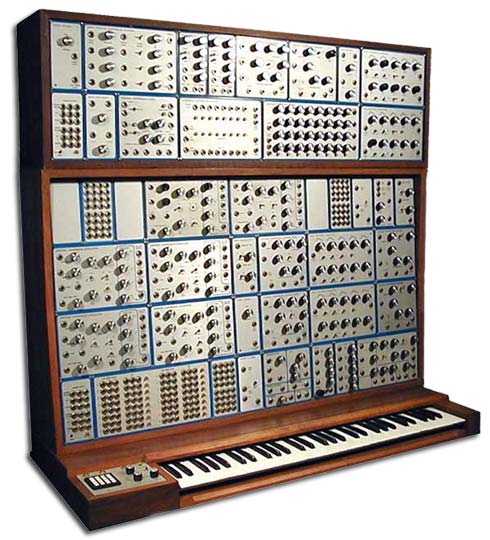I’ll take digital chill over analog noise 18 November 2010
I went to a music store the other day and found myself doing something I hadn’t done for nearly three decades: playing around with hardware, noodling on keyboards, thinking about sounds.
I spent my training working with tape loops, voltage controls, and grand old analog architecture. I had played around with some early Roland synths, but my first real experience in building sound was with a wall-sized Emulator modular synth, designed in 1972:

There was no way to save a patch, so I used sheets of paper with a schematic of the synth printed on it. I would draw the patch cord connections on the paper and leave bits of masking tape on the synth itself to mark knob positions. It could take up to an hour just to build one patch, and this was a monophonic synth — if I wanted a second track using the synth I would have to record that on a Tascam 8-channel reel-to-reel.
Enormous amounts of time were dedicated to problem solving the technical limitations of a fully analog studio setup. I learned the hard way to painstakingly plan multichannel bounce schedules to avoid losing even larger amounts of time to running out of tape channels; I maintained the inventory of patch cables, because not having a cable that could reach was infuriating; I built filters and soldered patch bays. At times I became obsessed with limiting tape noise. Recording projects would take weeks, sometimes months.
We bounced tracks up hill in both directions and we were grateful goddammit.
So with all that cane-waving about “real” synthesis and the like, you’d think that I’d be staunchly against this whole software synthesis thing – and you’d be dead wrong. These days my entire signal chain is happily contained inside software: synthesis, signal processing, recording, mastering, the whole works. The software I use (Propellerheads Reason and Record) doesn’t pull any punches when it comes to complexity, so I don’t feel like anything has been dumbed down or lost to the simplicity of software.
In fact, all my days chasing cables and pondering voltage controls and planning signal paths has made working with a software suite totally second nature. If I hadn’t, I’d probably be totally mystified by what the hell the cables were all about.
So really, there’s only one possible complaint to be had about software synthesis: the effort it takes to coax a “warm” sound out of it. For the handful of people for whom that is meaningful (and, probably the only ones who didn’t long ago skip out of this post in favor of LOLcats), I will say that what it takes to warm up digital sound is child’s play compared to what it took to eliminate various types of noise from the signal chain.
Yup. I’m digging this whole software thing.